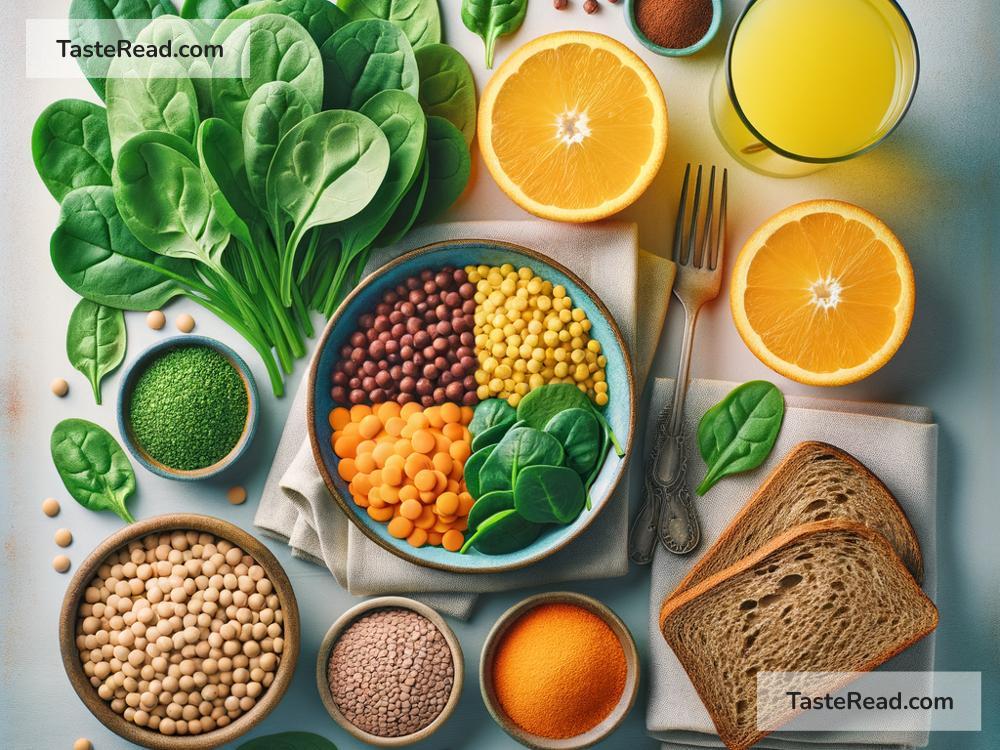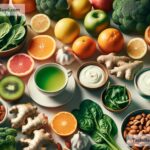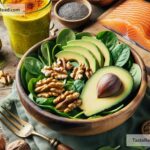Foods That Enhance Iron Absorption: What You Should Know
Iron is an essential nutrient that helps our bodies stay strong and healthy. It’s a key piece of the puzzle when it comes to making hemoglobin, a protein in red blood cells that carries oxygen throughout the body. If you’re not getting enough iron, you might feel tired, weak, or even dizzy. This condition is known as iron deficiency, and it’s one of the most common nutritional issues worldwide.
The good news is that you can boost your iron levels by including certain foods in your diet. But did you know that the way your body absorbs iron matters just as much as how much iron you eat? Some foods can actually help your body absorb iron more effectively, whether the iron comes from plants (non-heme iron) or animal-based sources (heme iron).
Let’s dive into the foods that can enhance iron absorption, with simple explanations for how they work.
Types of Iron in Food
Before we get started, it’s important to understand that there are two types of dietary iron:
- Heme Iron: Found in animal-based foods like meat, poultry, and fish. It’s the easiest form of iron for your body to absorb.
- Non-Heme Iron: Found in plant-based foods like beans, lentils, spinach, and fortified cereals. While it’s still important for your health, it’s harder for your body to absorb compared to heme iron.
Enhancing iron absorption is especially important if you primarily rely on non-heme iron sources, such as if you’re vegetarian or vegan.
Foods Rich in Vitamin C
When it comes to boosting iron absorption, vitamin C is your best friend. Vitamin C helps convert non-heme iron into a form that’s easier for your body to use. Adding vitamin C-rich foods to your meals can significantly improve how your body absorbs iron.
Here are some foods that are loaded with vitamin C:
- Citrus fruits: Oranges, lemons, grapefruits, and limes.
- Berries: Strawberries, blueberries, and raspberries.
- Bell peppers: Especially red and yellow varieties.
- Tomatoes: Fresh or cooked—tomato sauce counts too!
- Leafy greens: Like kale, spinach, and Swiss chard.
- Broccoli: A vitamin-packed powerhouse.
For the best results, combine vitamin C-rich foods with your iron-rich meals. For example, if you’re eating lentils (a plant-based source of iron), pair them with a side of fresh tomato salad or add some bell peppers to your dish.
Animal-Based Protein
Animal-based proteins like meat, chicken, and fish are excellent sources of heme iron, which is already easy for your body to absorb. But what’s even better is that these foods can help your body absorb iron from plant-based (non-heme) sources as well. Scientists call this the “meat factor,” though the exact mechanism behind it isn’t fully understood.
To take advantage of this effect, you might try pairing animal-based proteins with plant-based iron sources. For instance, serve chicken with a side of spinach, or make a beef and lentil stew.
Fermented Foods and Probiotics
Fermented foods like yogurt, kefir, kimchi, and sauerkraut can also make a difference. They contain beneficial bacteria known as probiotics, which help improve digestion. A healthy digestive system absorbs nutrients better, including iron.
If you’re eating a plant-based diet, consider incorporating fermented foods into your meals alongside your iron-rich plants.
Foods Rich in Vitamin A and Beta-Carotene
Vitamin A and beta-carotene, which are found in colorful fruits and vegetables, also play a role in enhancing iron absorption. They can help improve how your body processes non-heme iron from plants.
Foods rich in vitamin A and beta-carotene include:
– Carrots: Raw, cooked, or juiced.
– Sweet potatoes: Another nutrient-packed option.
– Mangoes: A tropical fruit filled with goodness.
– Squash: Includes butternut and pumpkin varieties.
– Apricots: Fresh or dried.
Pair these foods with your iron-rich meals. For example, serve lentils with a roasted sweet potato or enjoy a spinach salad sprinkled with shredded carrots.
Pairing Iron-Rich Foods with Healthy Fats
Healthy fats like those found in olive oil, avocado, or nuts can aid in nutrient absorption, including iron. Fats support the digestion of fat-soluble vitamins like vitamin A, which in turn helps boost iron absorption.
For example, drizzle olive oil over a salad made of leafy greens and bell peppers, or add slices of avocado to your breakfast alongside iron-rich foods like eggs or fortified bread.
Limit Foods That Block Iron Absorption
Finally, while it’s key to focus on foods that enhance iron absorption, it’s also wise to limit foods that can block it. For example:
– Calcium: Dairy products interfere with iron absorption, so avoid eating them during meals high in iron.
– Tea and Coffee: These beverages contain compounds called tannins, which can reduce iron absorption. Drink them between meals, not with your food.
– Phytates: Found in whole grains, seeds, and legumes, these substances can slow iron absorption. To reduce their impact, soak or ferment grains and legumes before cooking.
Final Thoughts
Combining foods to enhance iron absorption doesn’t have to be complicated. Simply add vitamin C-rich fruits and vegetables, lean proteins, and healthy fats to your iron-rich meals to amplify their benefits. And remember, avoid foods and drinks that block iron absorption during your meals.
With these tips, you can stay energized and ensure your body gets the iron it needs. Eating smart and pairing the right foods can make all the difference for your health!


